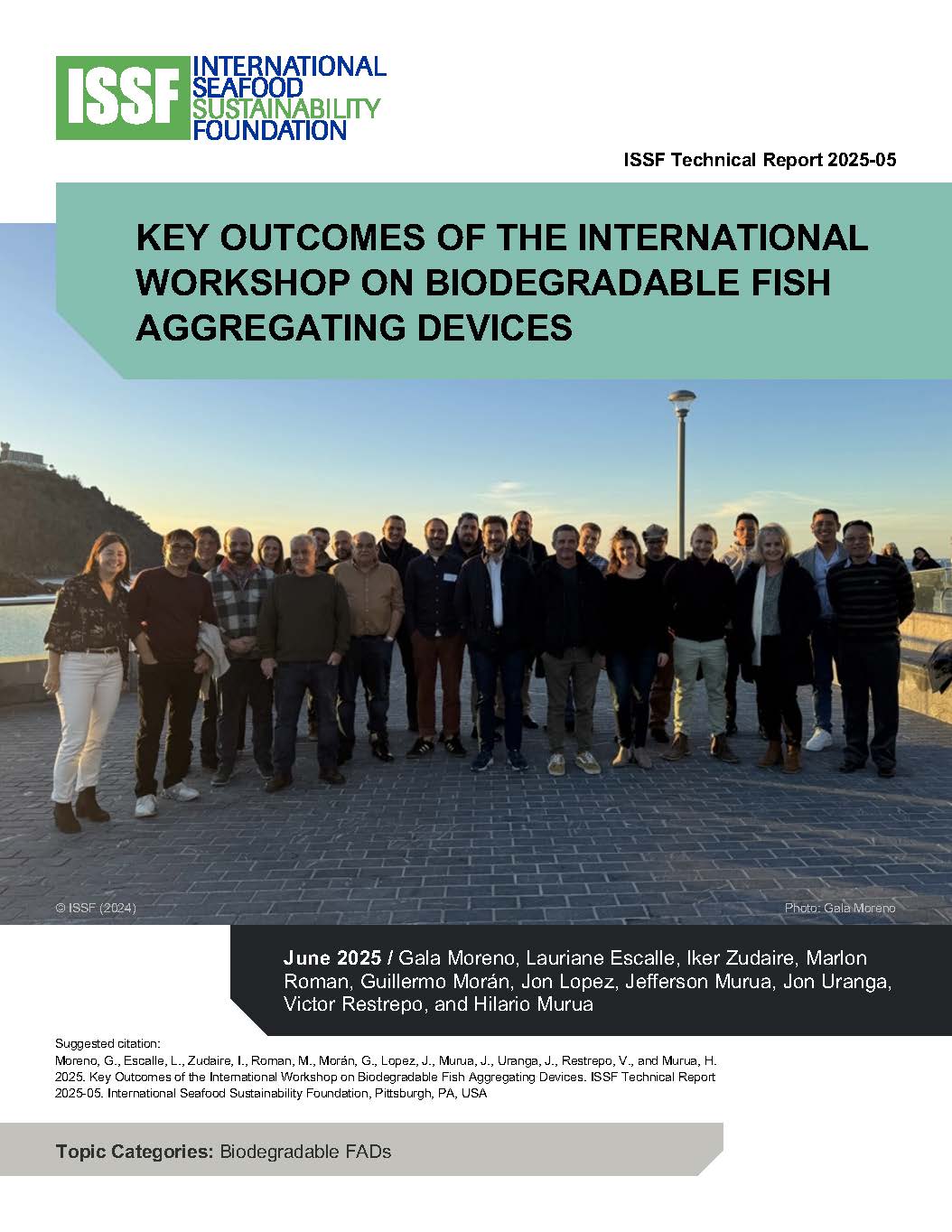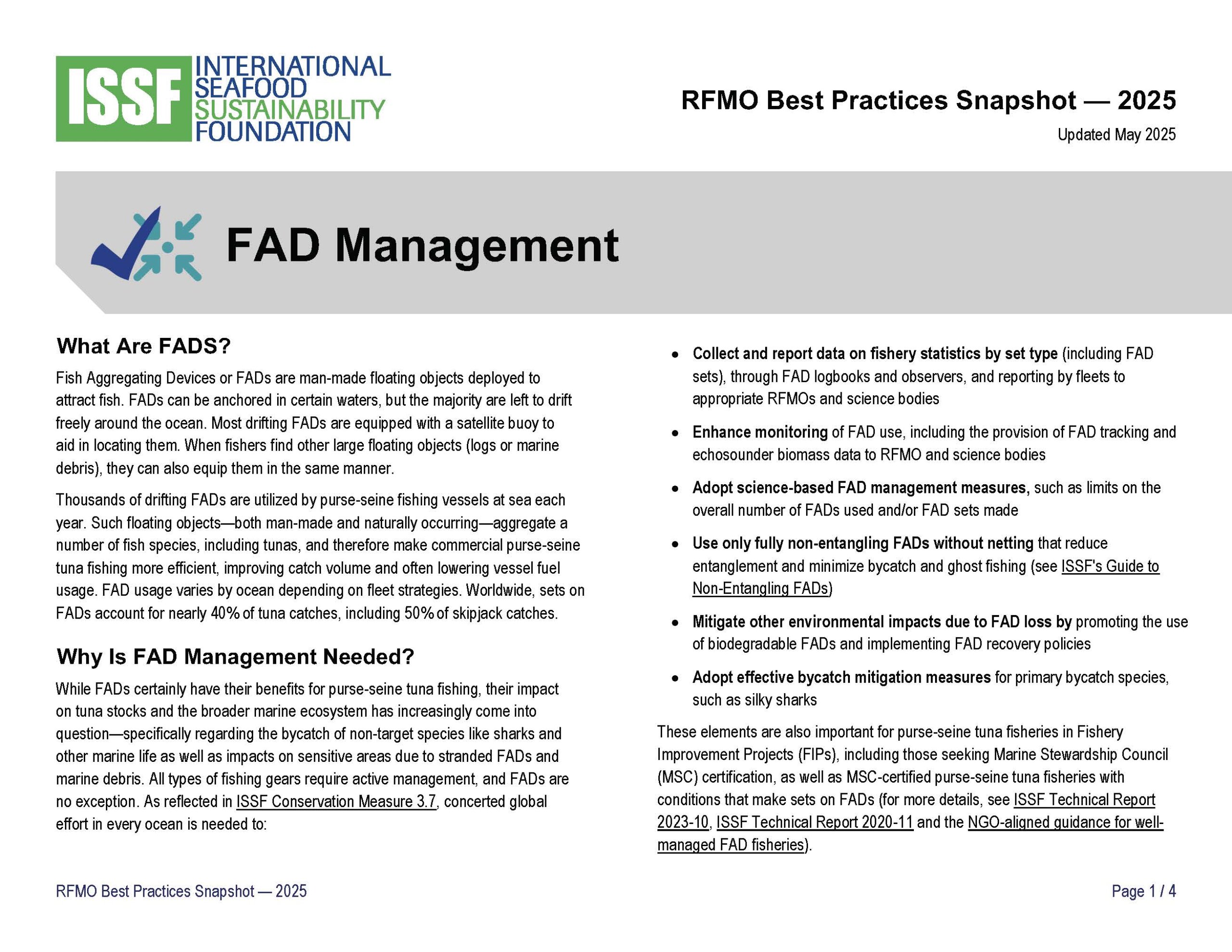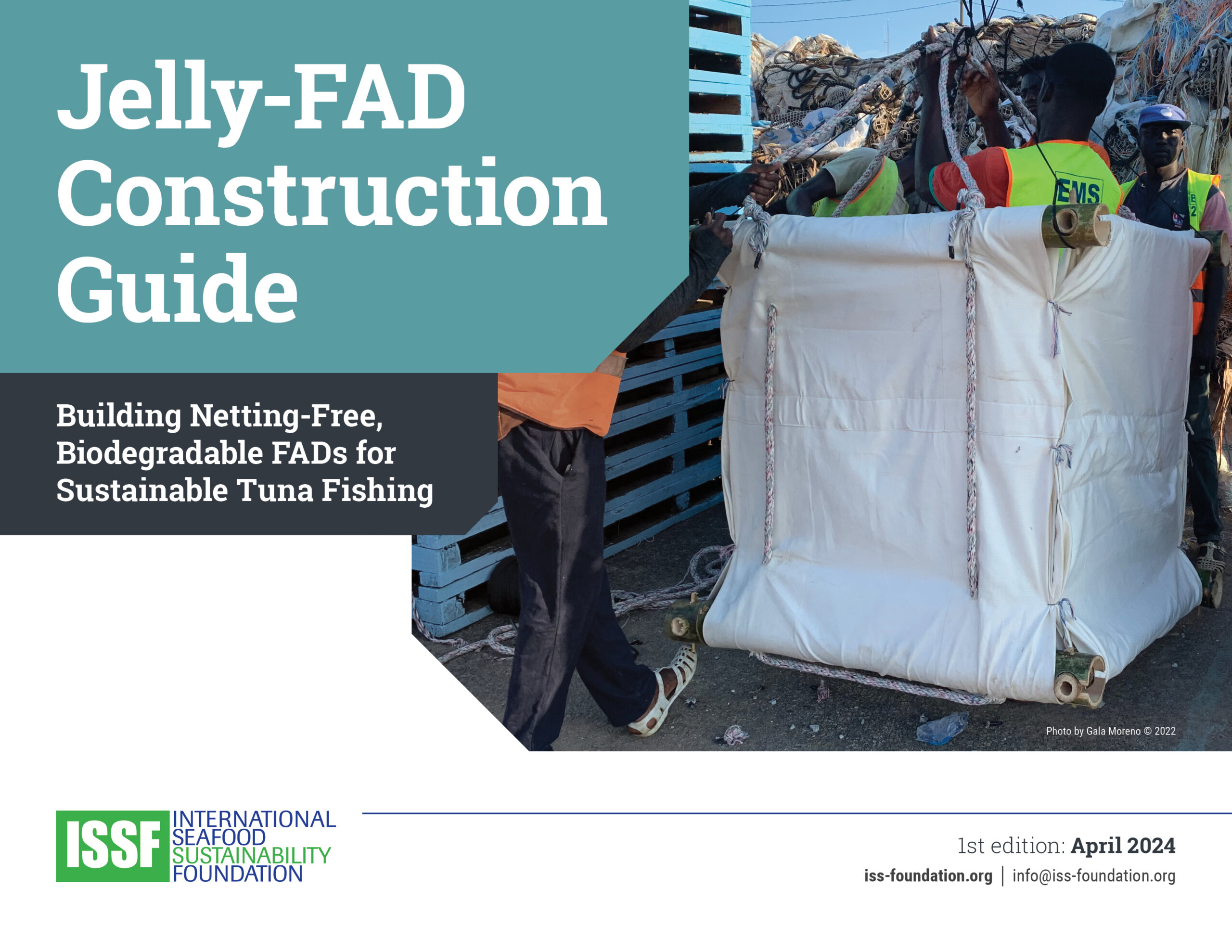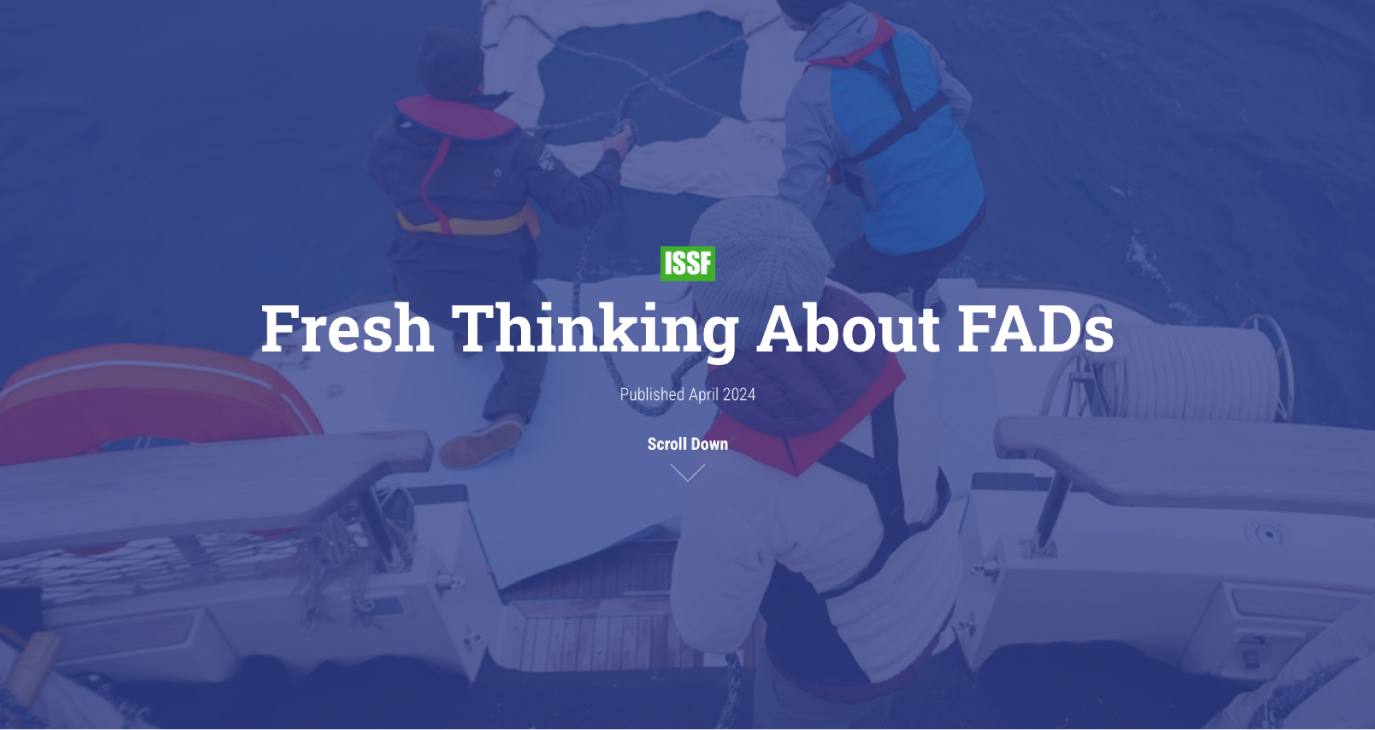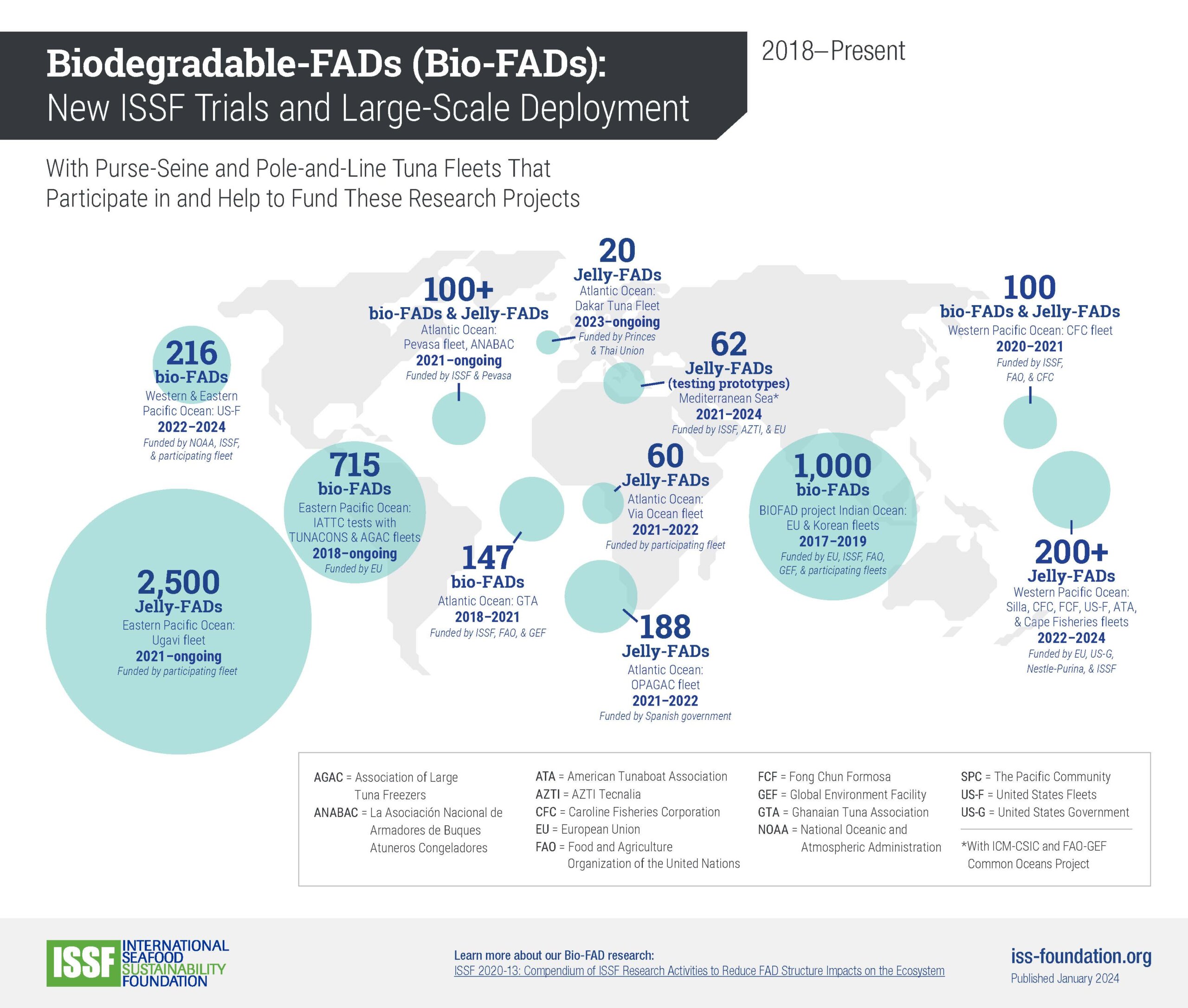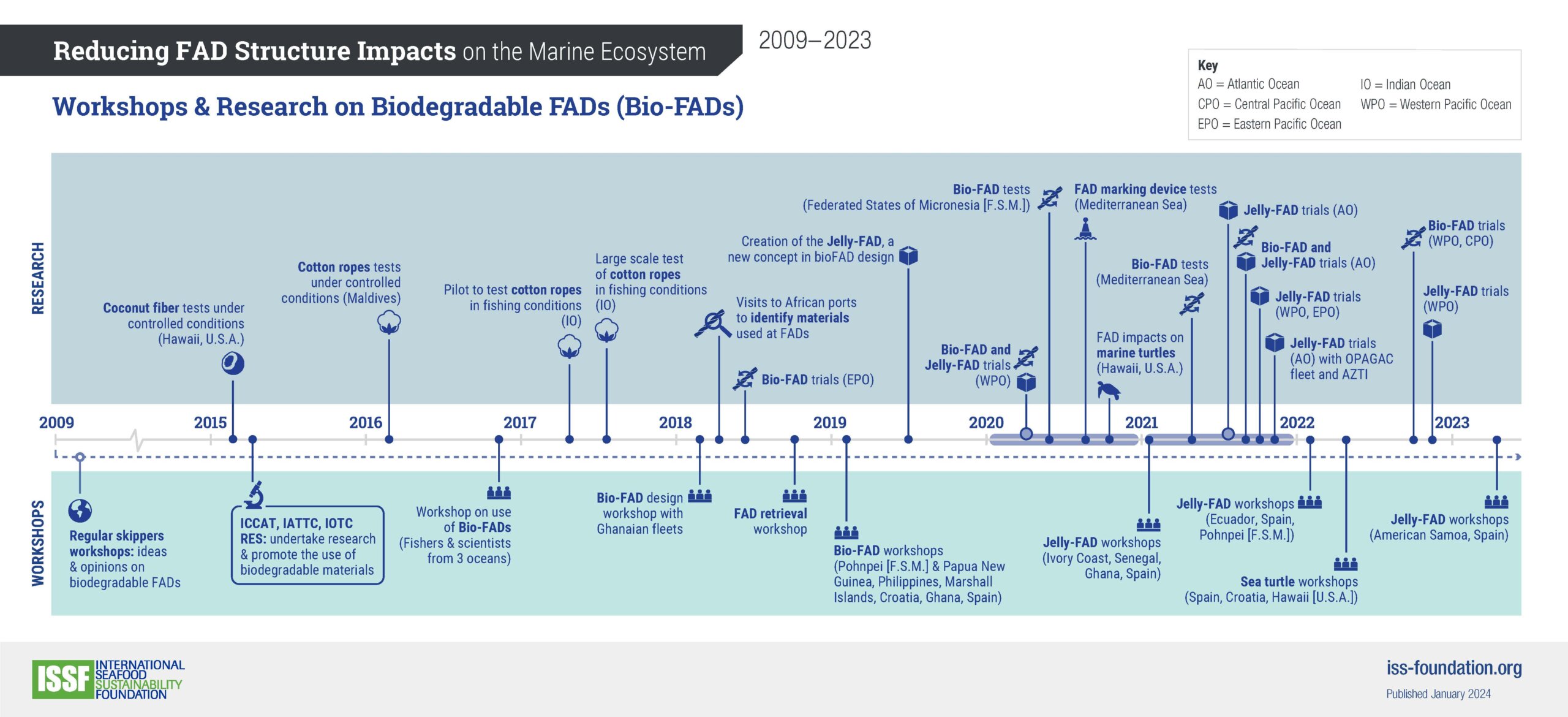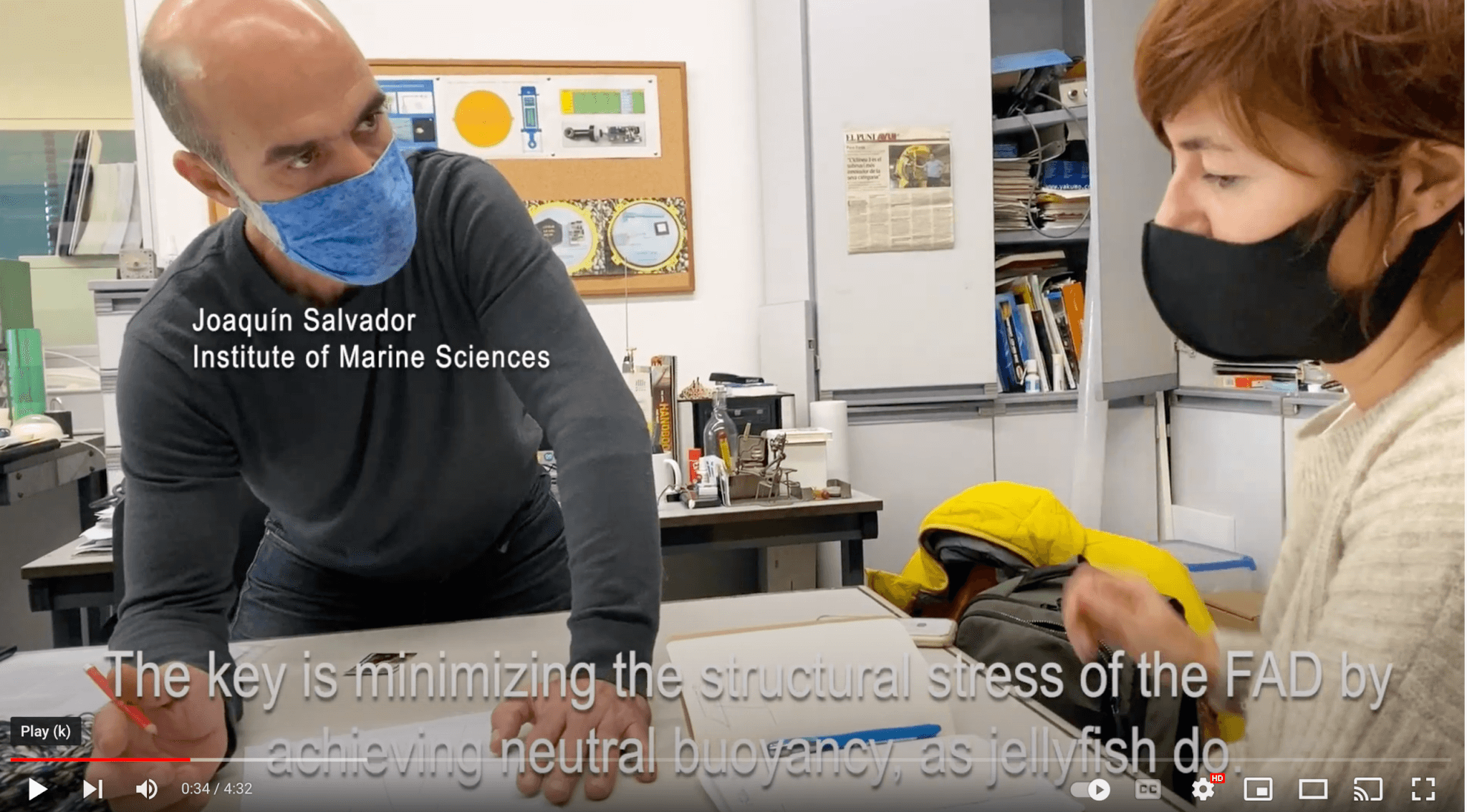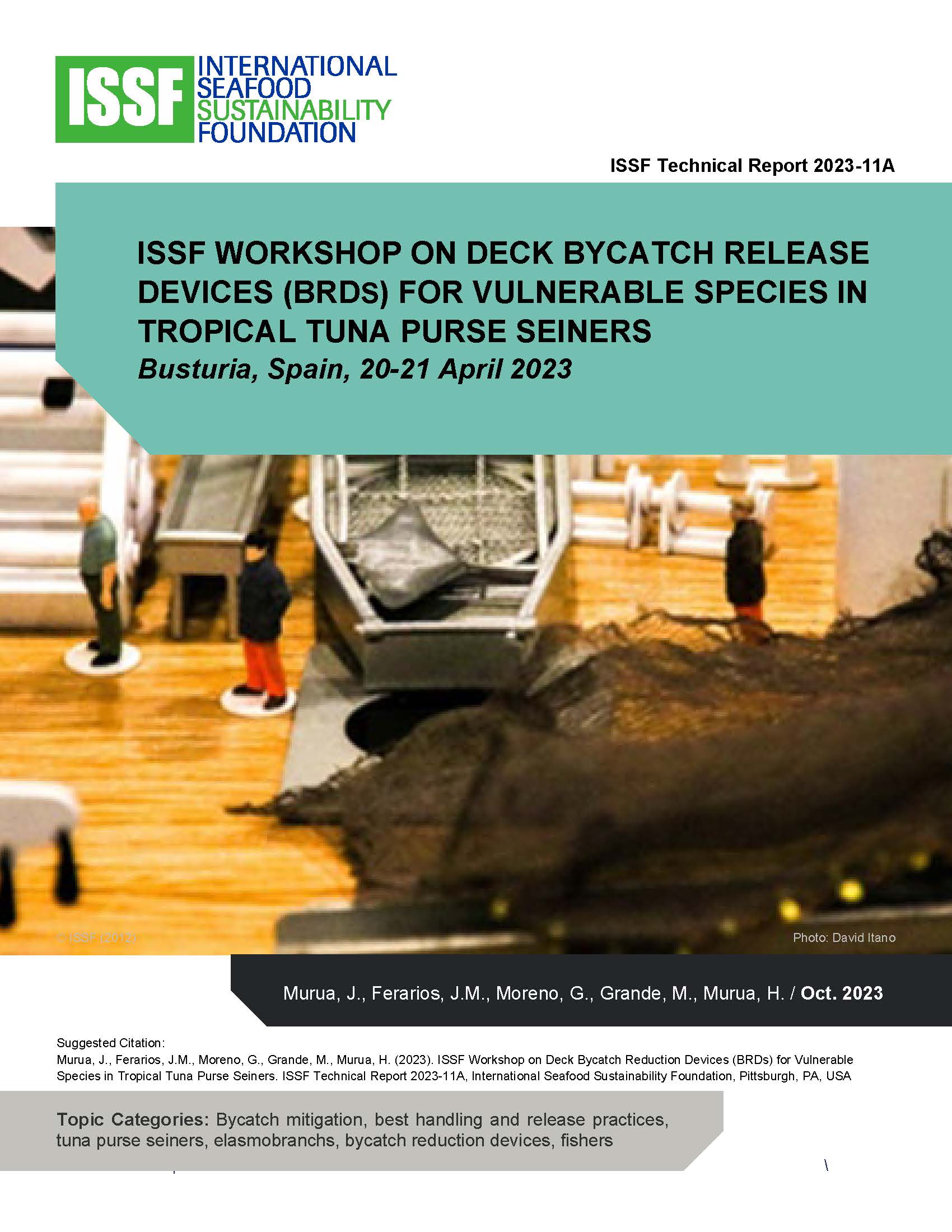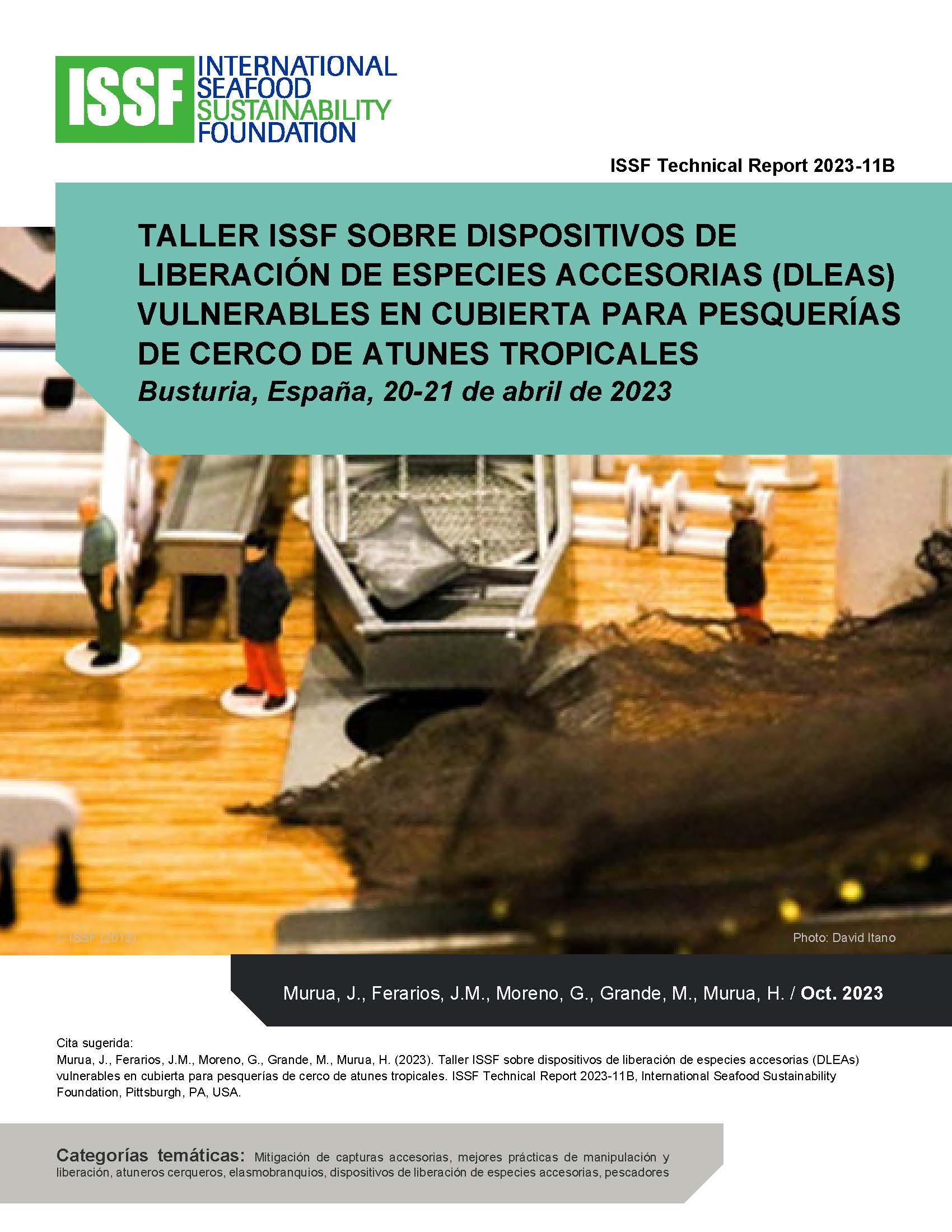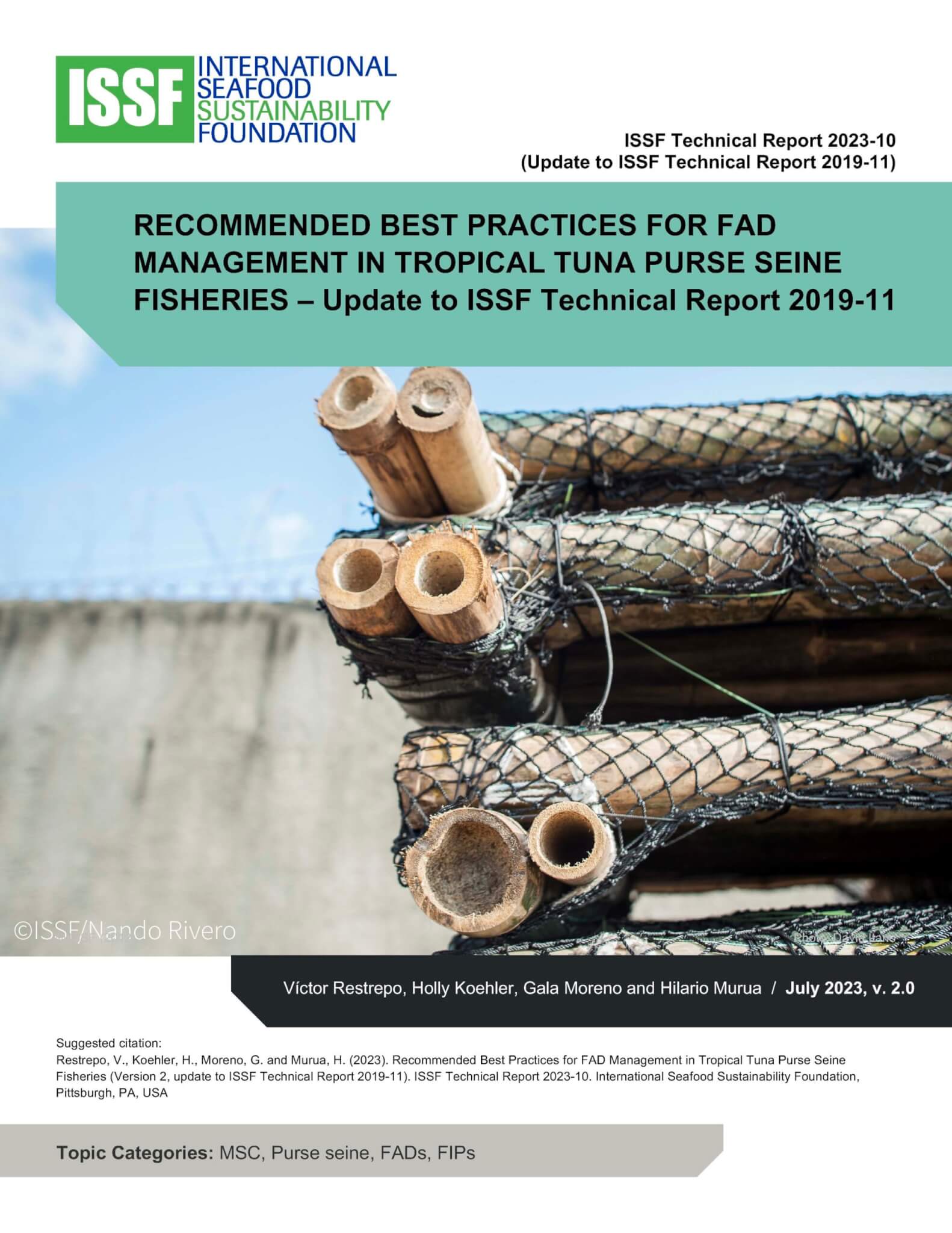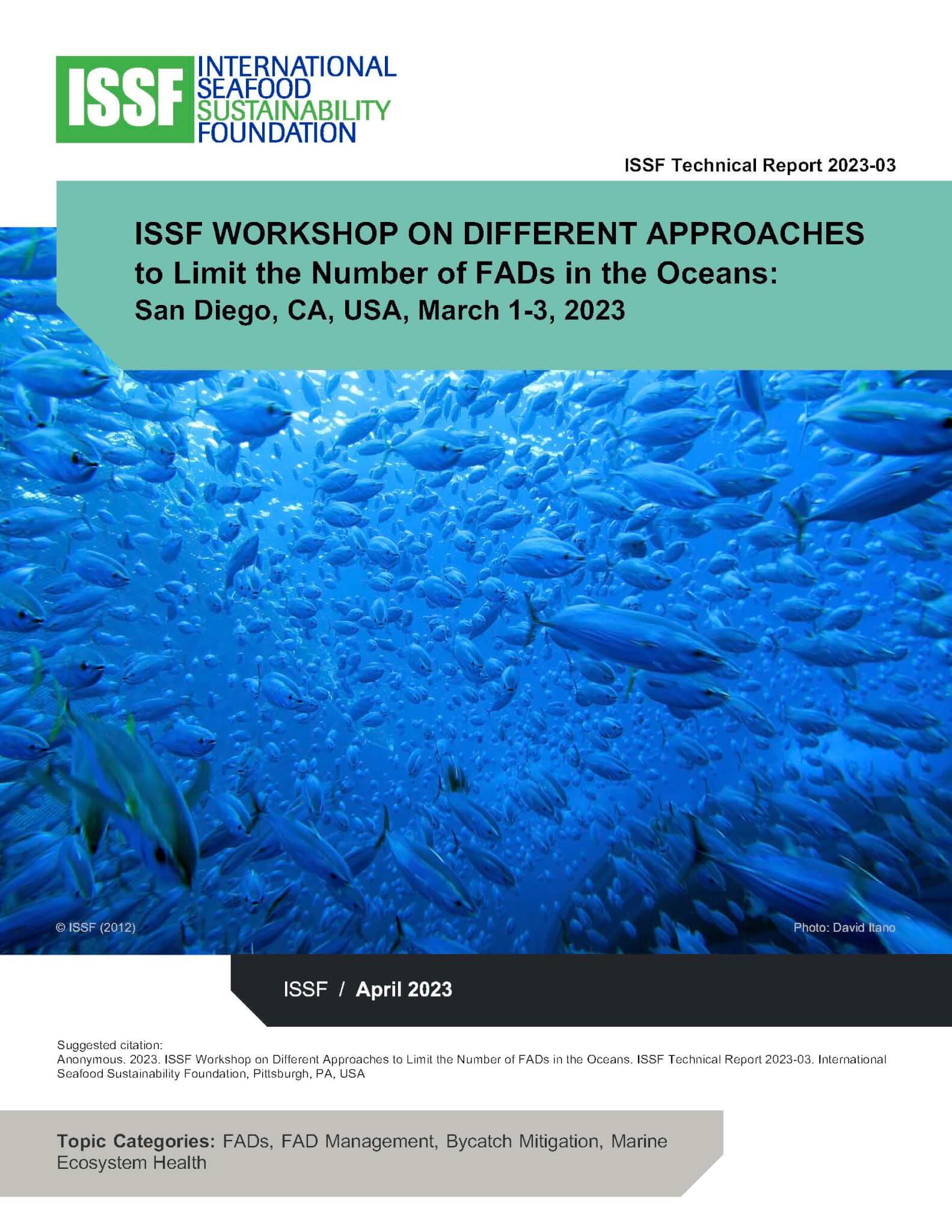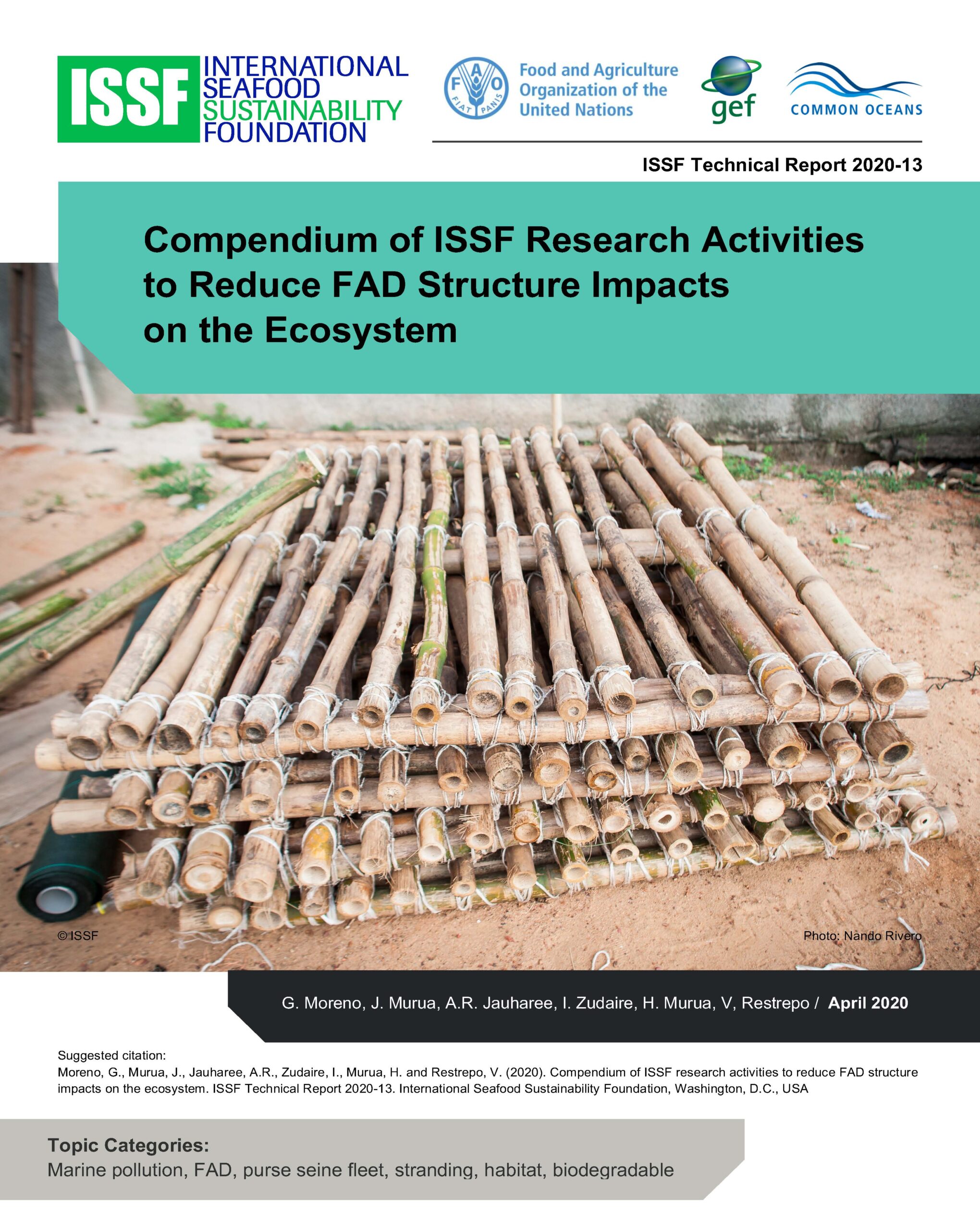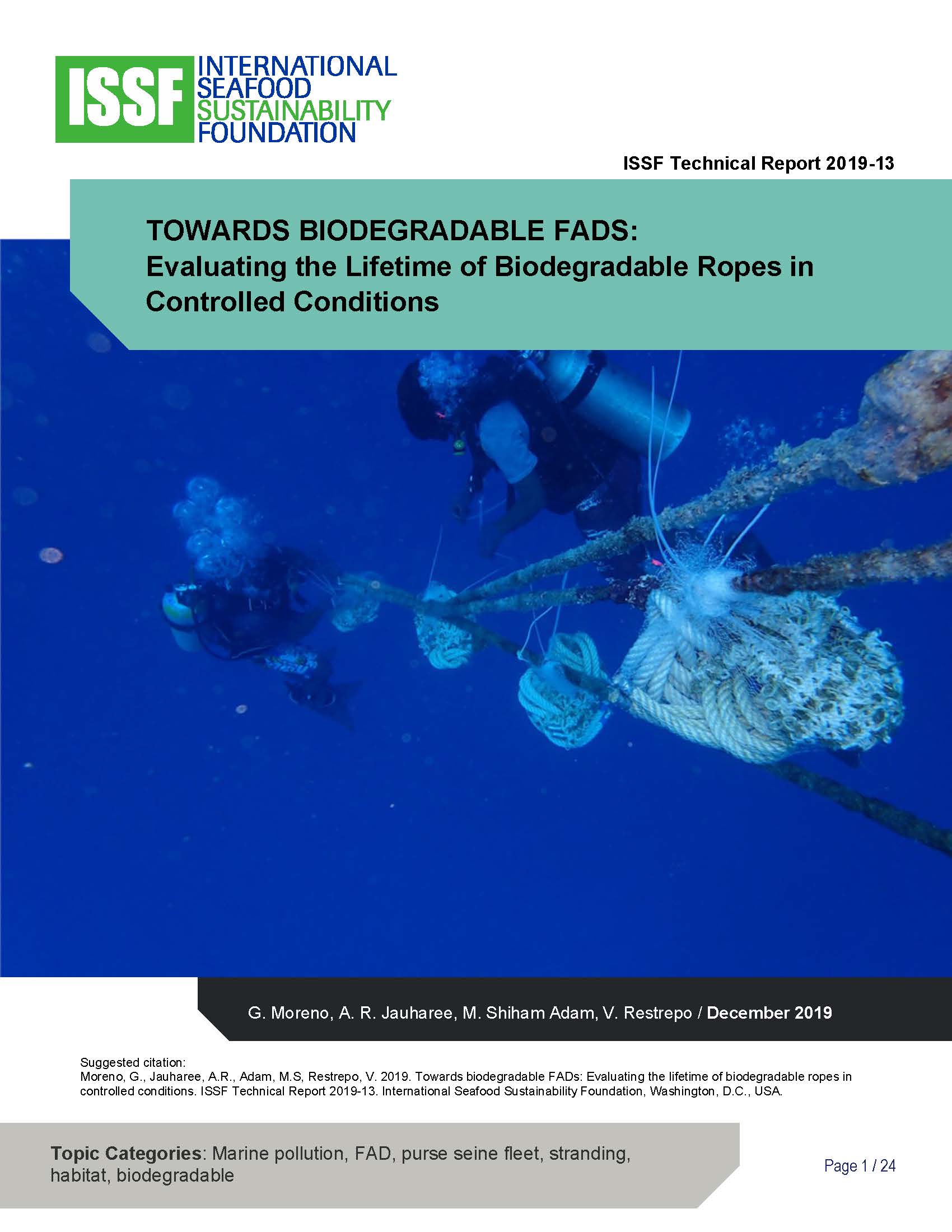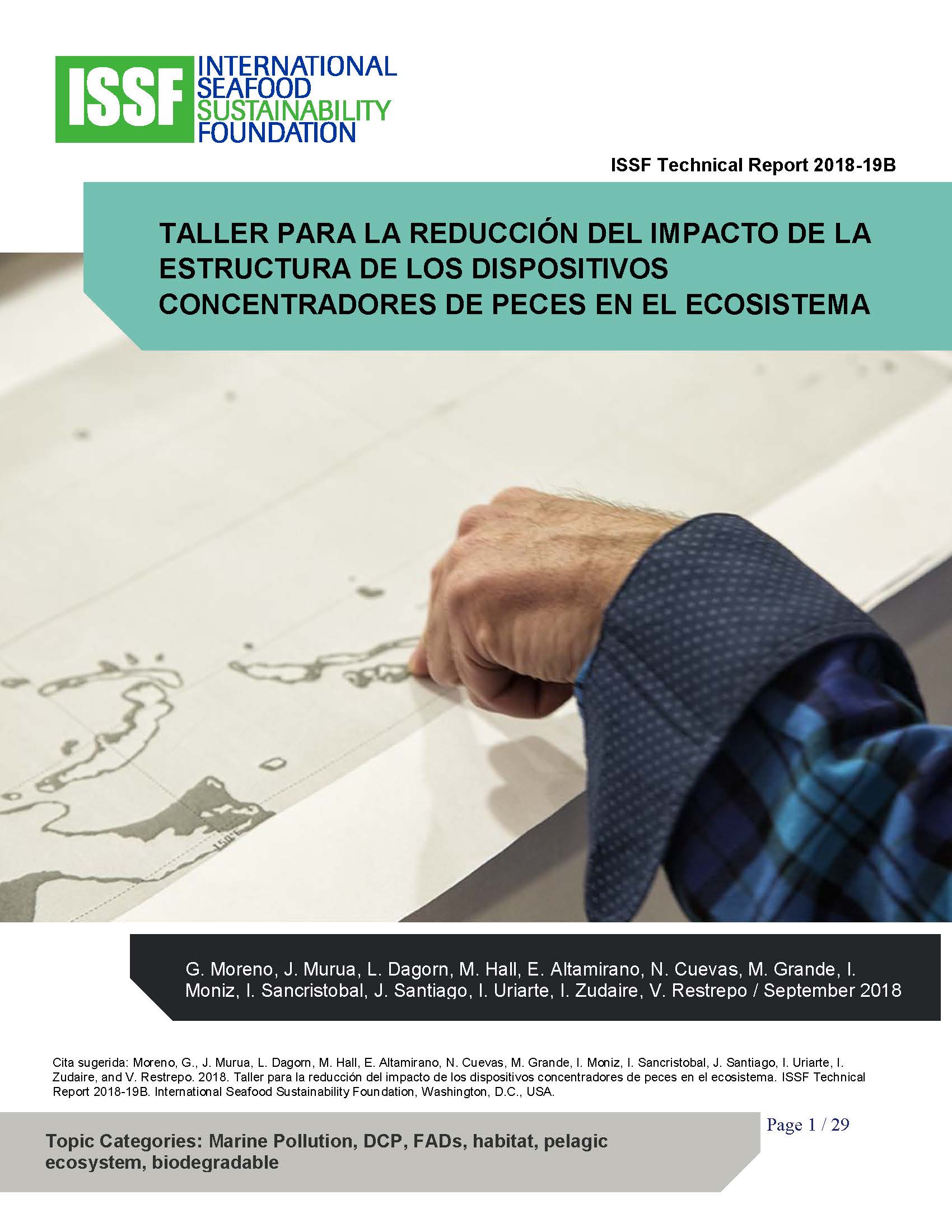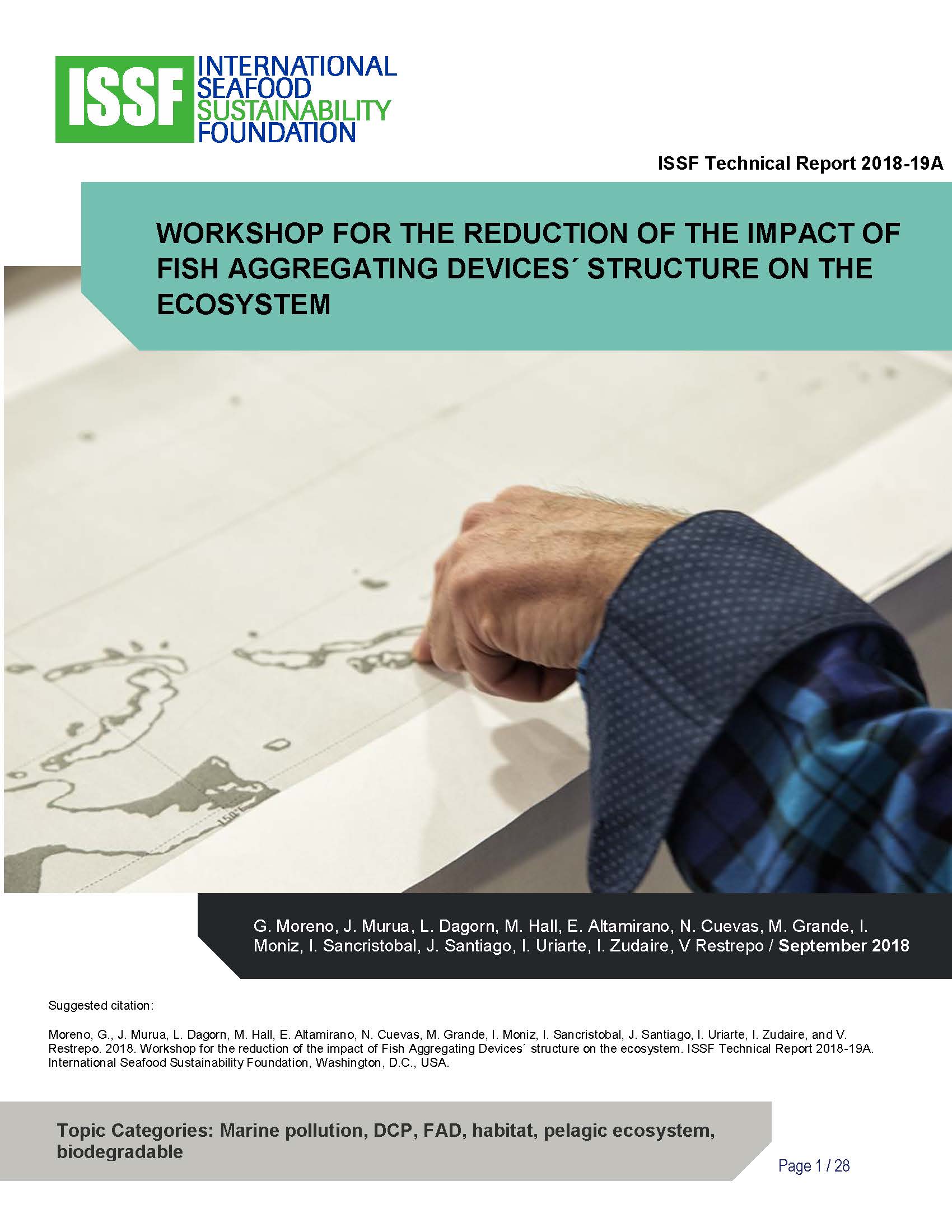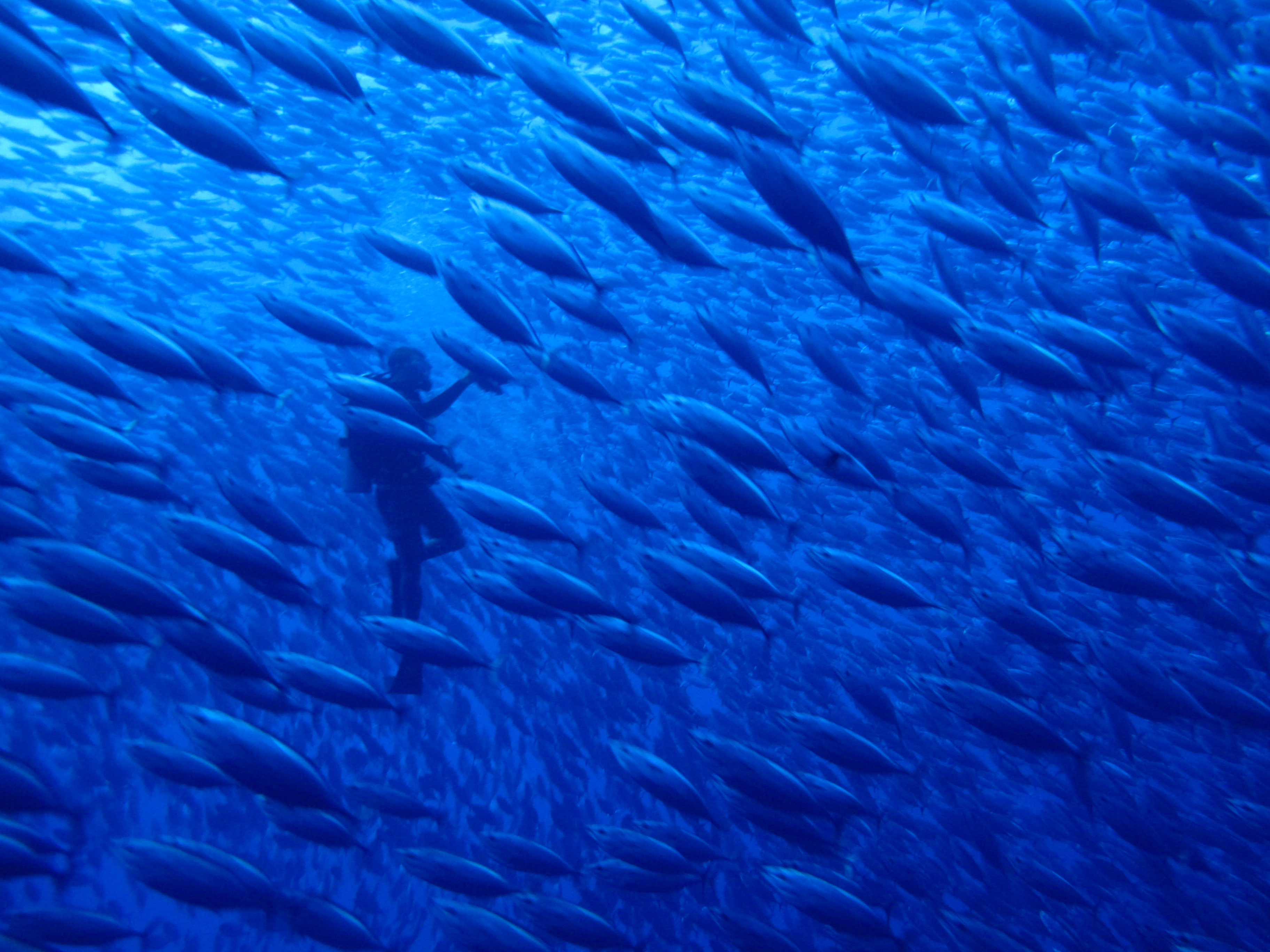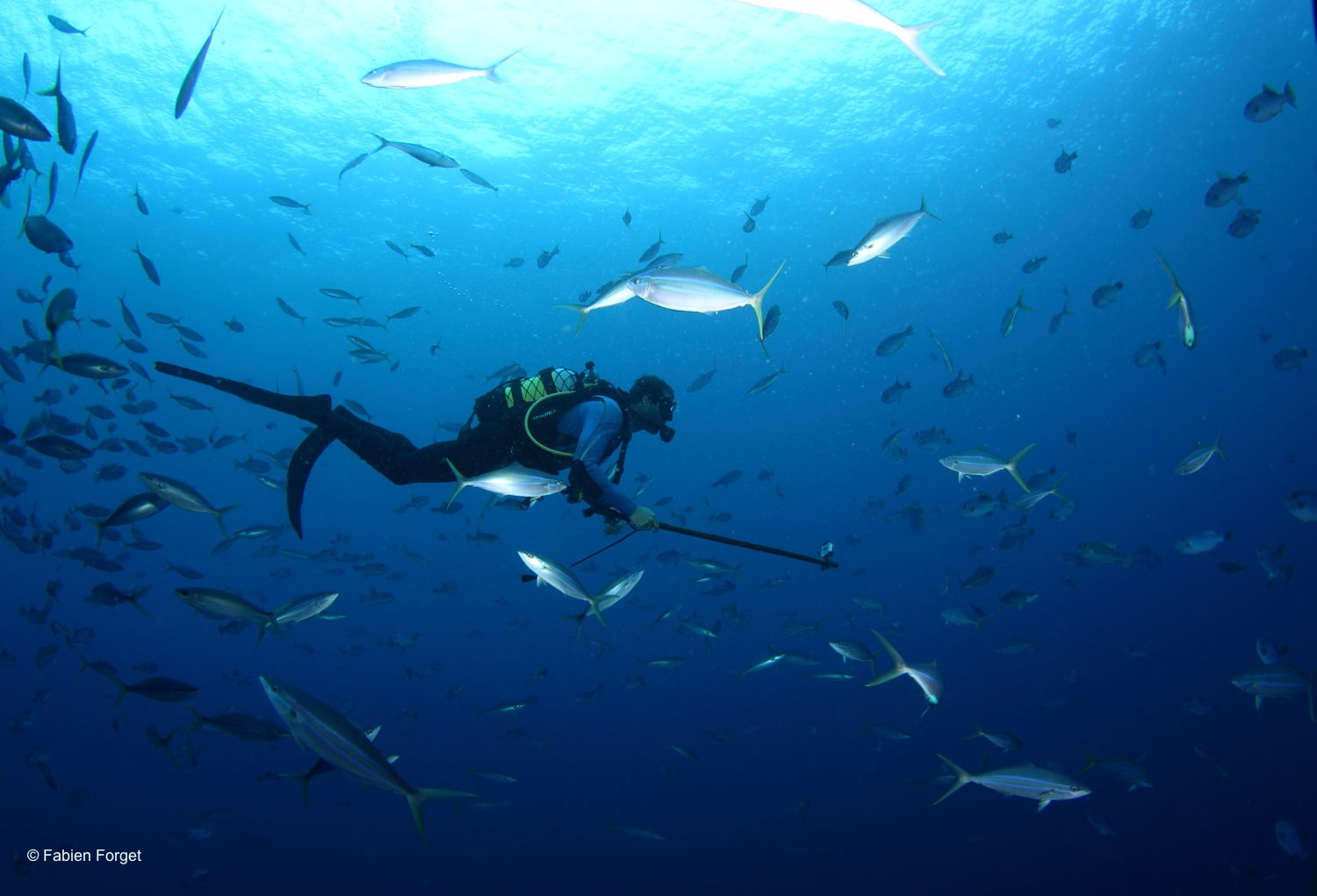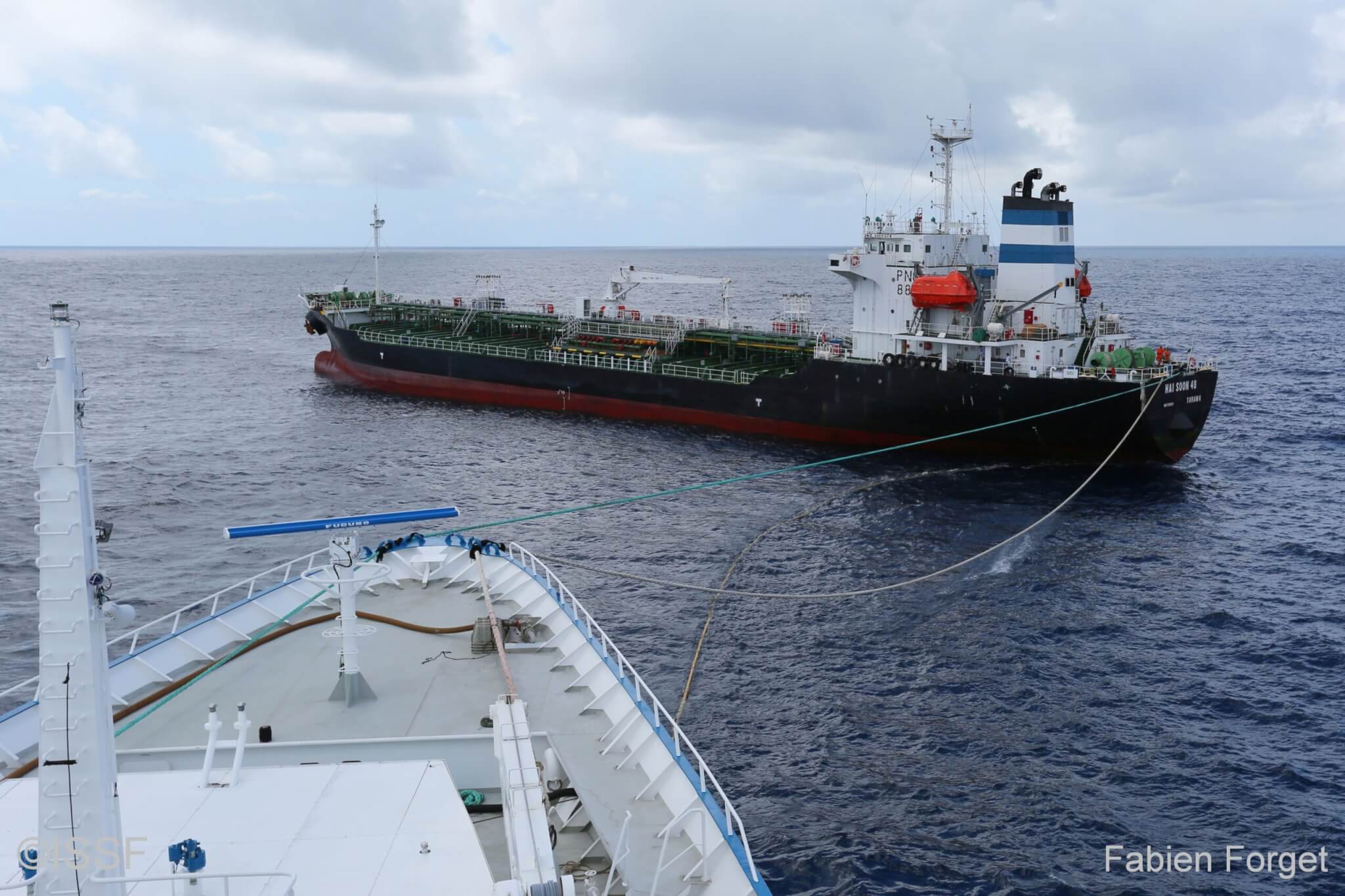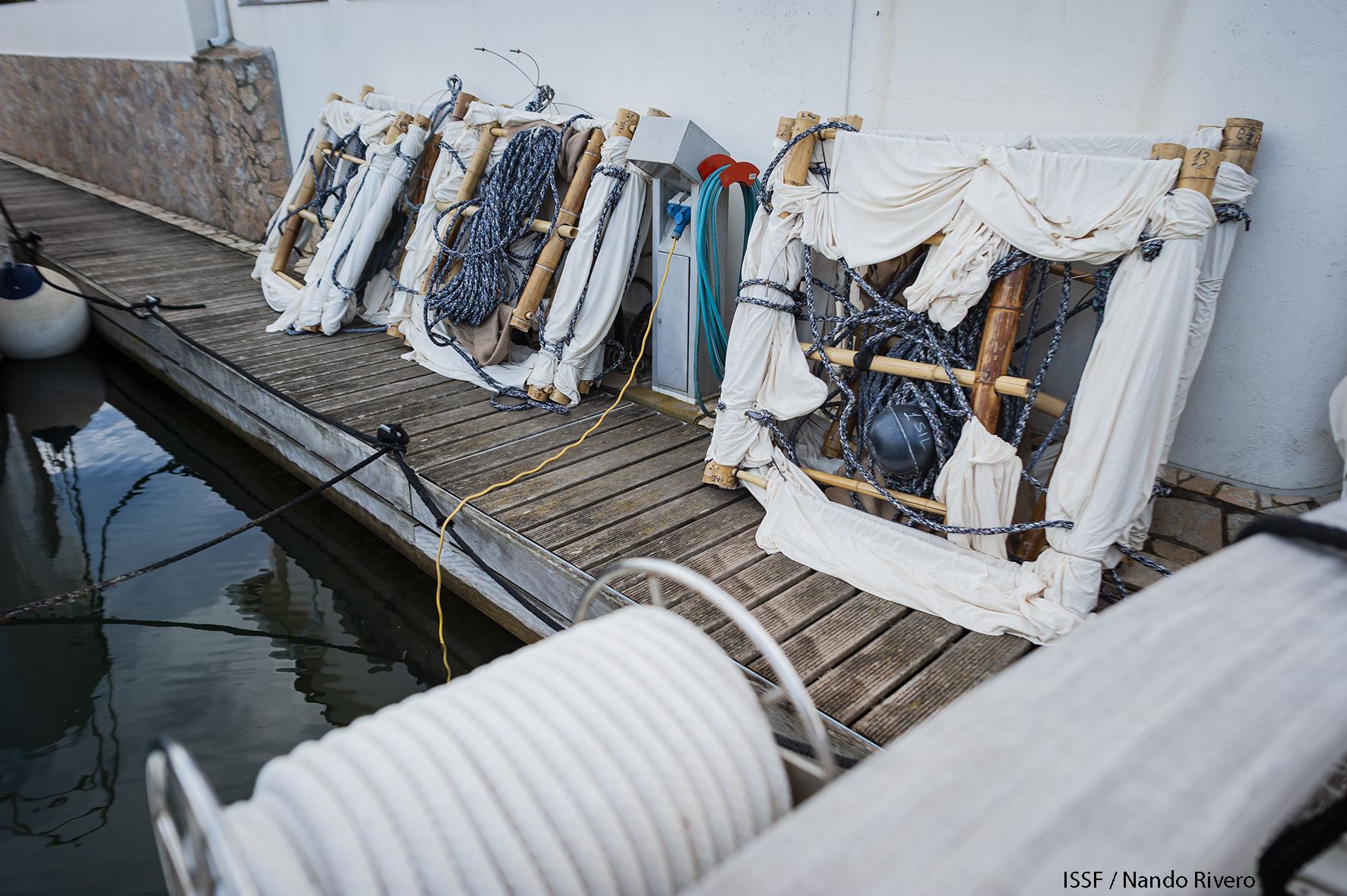
Jelly-FADs
To help tuna fishers avoid plastic- and netting-based fishing gear that can harm non-target marine species and ecosystems, ISSF scientists developed the “jelly-FAD” — a new model for drifting fish aggregating devices (DFADs) that offers sustainability and durability advantages.
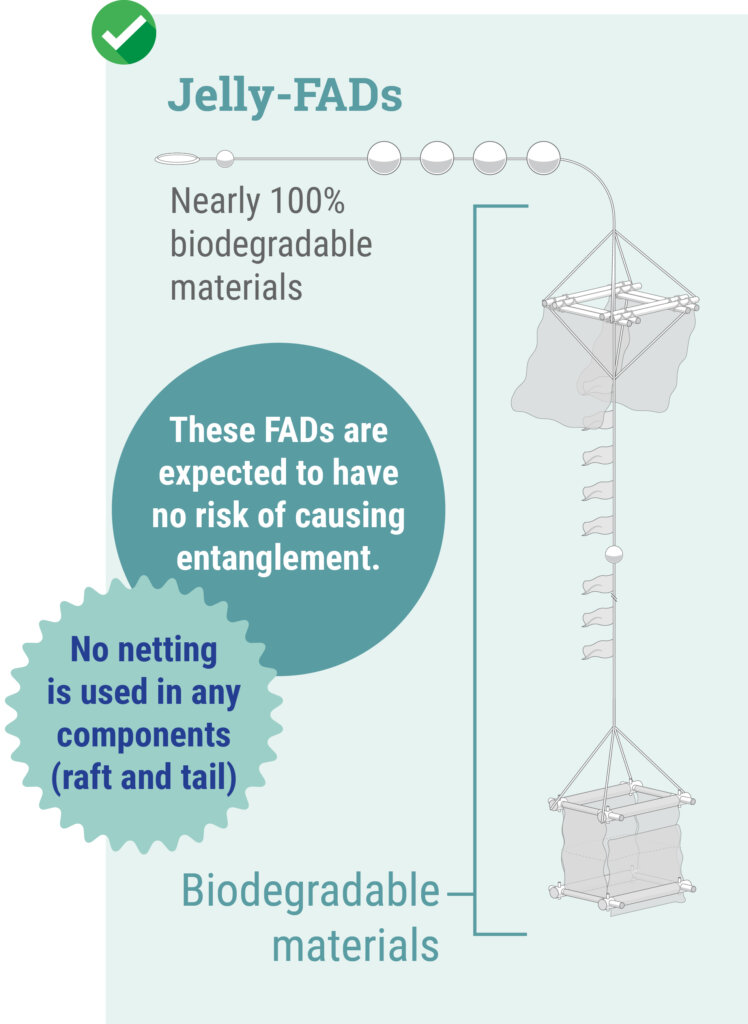 Inspired by the neutral buoyancy of jellyfish, the jelly-FAD is a lighter, simpler structure than other FAD designs, including previous biodegradable designs, that have been used to attract tuna.
Inspired by the neutral buoyancy of jellyfish, the jelly-FAD is a lighter, simpler structure than other FAD designs, including previous biodegradable designs, that have been used to attract tuna.
A jelly-FAD’s submerged raft, three-dimensional bottom cube, and flotation buoys allow it to drift slowly, with less structural stress from wind and water, within a vessel’s intended fishing grounds.
Jelly-FADs are non-entangling and biodegradable — assembled with bamboo, cotton, and other natural, affordable materials — as well as customizable. To build jelly-FADs for their vessels, tuna fishers do not need to have unusual materials, special equipment, or advanced carpentry skills.
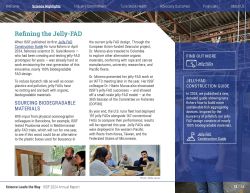
Jelly-FAD Refinements
In our 2024 annual report, Science Leads the Way, we share recent research to further improve the jelly-FAD design.
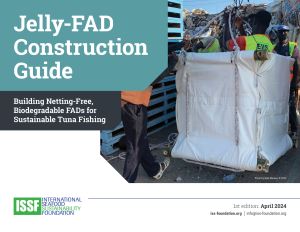
Resource for Tuna Fishers
We created an illustrated guide that gives tuna fishers step-by-step instructions for building jelly-FADs.
OUR CONTRIBUTIONS
FAD Best Practices
Since our founding in 2009, ISSF scientists have been researching how to make FADs — a common tuna fishing method around the globe — more sustainable.
We have examined many aspects of FAD use and management — including design, deployment, and data collection; FAD limits and recovery; and RFMO policies and outcomes — in our scientific reports, best practices reports, and peer-reviewed articles.
In addition, ISSF reports have detailed the best practices that tropical-tuna purse-seine fisheries must follow to meet and maintain Marine Stewardship Council (MSC) certification standards. Supporting fisheries in achieving MSC certification is ISSF’s main objective.
Fisher Collaboration & Resources
ISSF values working directly with fishers, who are on the frontline of sustainable fishing efforts, to brainstorm and test new approaches and gear for reducing bycatch and marine pollution.
To develop the paradigm-shifting jelly-FAD design, for example, we collaborated with tuna fleets and physical oceanographers from the Institut de Ciències del Mar (CSIC), through workshops and trials of jelly-FAD prototypes under real fishing conditions — a sketchpad-to-sea process that began in 2019 and culminated in the 2024 publication of our first Jelly-FAD Construction Guide.
Our initial guide to help fishers choose and use more sustainable FAD designs, the Non-Entangling & Biodegradable FADs Guide, debuted in 2012.
FAD Management Advocacy
Along with our outreach to fishers through workshops, publications, and videos, we share FAD insights and recommendations with the tuna RFMOs and government bodies that set FAD policies and oversee compliance.
To inform and influence RFMO meeting debate and decision-making, ISSF disseminates tuna RFMO papers, authored by our science team, as well as position statements. We also sponsor side events at RFMO meetings worldwide to present our latest research.
Based on documented best practices for sustainable fishing, ISSF benchmarks the tuna RFMOs’ performances on FAD management and other topics in our “RFMO snapshot” series. We also identify annual priorities for RFMO action.
RELATED RESOURCES
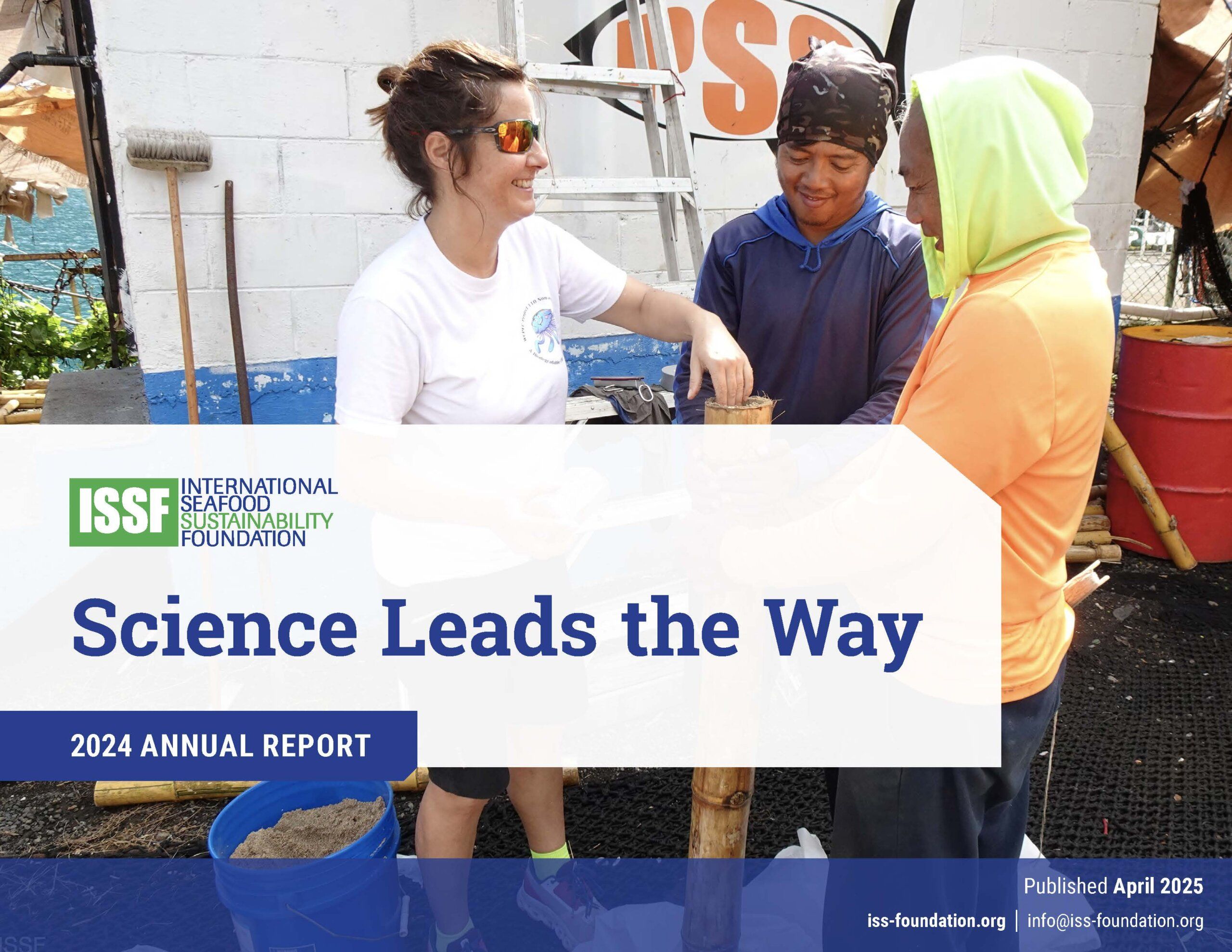
Annual Report
Science Leads the Way explores ISSF’s research, outreach, and other achievements in 2024.
Fresh Thinking about FADs
Our new Web feature story, “Fresh Thinking about FADs,” explores the solutions that ISSF scientists have been researching to prevent bycatch and marine pollution in FAD fisheries.

Dr. Gala Moreno
ISSF Senior Scientist Gala Moreno, Ph.D., leads ISSF’s jelly-FAD research projects worldwide.
Jelly-FAD Training & Support
ISSF conducts workshops at tuna ports worldwide to allow scientists and fishers to share ideas and information on sustainable fishing gear and approaches.
Tuna vessels interested in ISSF workshops and other support to make the transition to using non-entangling, biodegradable jelly-FADs are encouraged to contact us.
